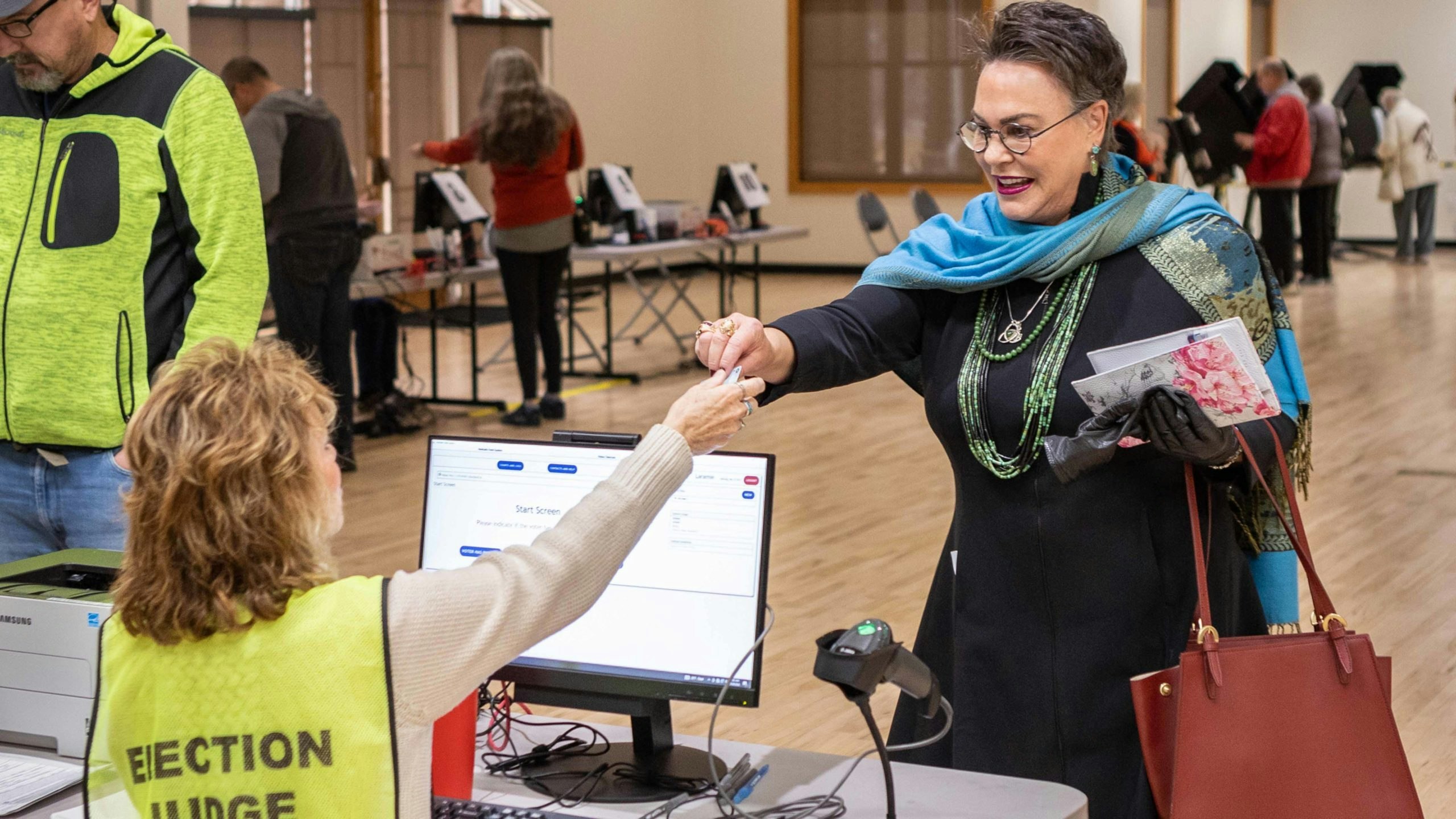By Leo Wolfson, State Politics Reporter
Leo@Cowboystatedaily.com
On the surface, it’s clear Wyoming’s voter turnout for the general election wasn’t much to write home about with the fewest voters seen at the polls for a general election in eight years.
A closer look at the data reveals more details about Wyoming’s voters and more evidence of post-primary apathy.
Historic Numbers
A 67% share of the 446,379 people in Wyoming old enough to vote registered to do so, the highest in Wyoming since 1998. This number may show that voter registration and party affiliation hold significant weight for the people of Wyoming, whether they end up casting ballots in an election or not.
There have never been more registered voters in Wyoming history.
Voters who were registered by or voted in the primary did not need to make any changes to their status to automatically registered for the general election.
Voter turnout in August was the highest on record for a Wyoming primary election and the largest percentage of eligible voter turnout in a primary since 1994.
Many have speculated this was caused by the highly publicized Republican U.S. House race between U.S. Rep. Liz Cheney and challenger Harriet Hageman.
Primary Focus
Although crossover voting was a major concern for many Hageman supporters entering the primary, statistics show that she also drew many, likely casual voters, who had not voted in prior primary elections.
After Hageman won the race, many disengaged or inconsistent voters may have lost interest in voting in November. There were no competitive statewide races in the general election and only one state Legislature race that was decided by less than 5% of the vote.
The 15,966 gain in voters between the primary and general elections was the smallest recorded increase between elections of the same year seen since the Wyoming Elections Division started tracking turnout numbers in 1978.
Disparity Between Primary And General
The turnout of eligible voters improved between this year’s primary and general elections by 3.6%. It was the lowest turnout of eligible voters in a general election since 2014 and the lowest increase in eligible voter turnout between a primary and general election by percentage in at least 46 years.
There were 23% fewer people who voted in the general election than were registered to vote entering that day. This comes in contrast to the 2020 election, where more people voted than were registered to vote entering Election Day. That reflects far fewer people registering to vote at polling places than usual.
Voter turnout is always lower in non-presidential election years, but this year saw the largest difference between the number of people registered to vote and the actual voter turnout since at least 1976.
Crossover Voting
There is evidence from the general election showing the participation of 22,000 to 31,000 crossover voters in the primary election.
Wyoming Democratic governor candidate Theresa Livingston received 30,676 votes in the general election, 22,475 more than were cast for Democrats in the primary.
Democratic U.S. House candidate Lynette Grey Bull pulled about 22% of the vote in the general election.
Assuming that percentage roughly represents the state’s Democratic base, there should have been as many as 40,091 Democratic voters in the primary election if no one had crossed over to vote as Republicans. In reality, there were 8,201.
Assuming Democrats made up roughly 3,520, or 22% of the new voters in the general election and Republicans the same roughly 70% Hageman received, Hageman likely gained nearly 8,000 voters who voted for another candidate in the primary.





